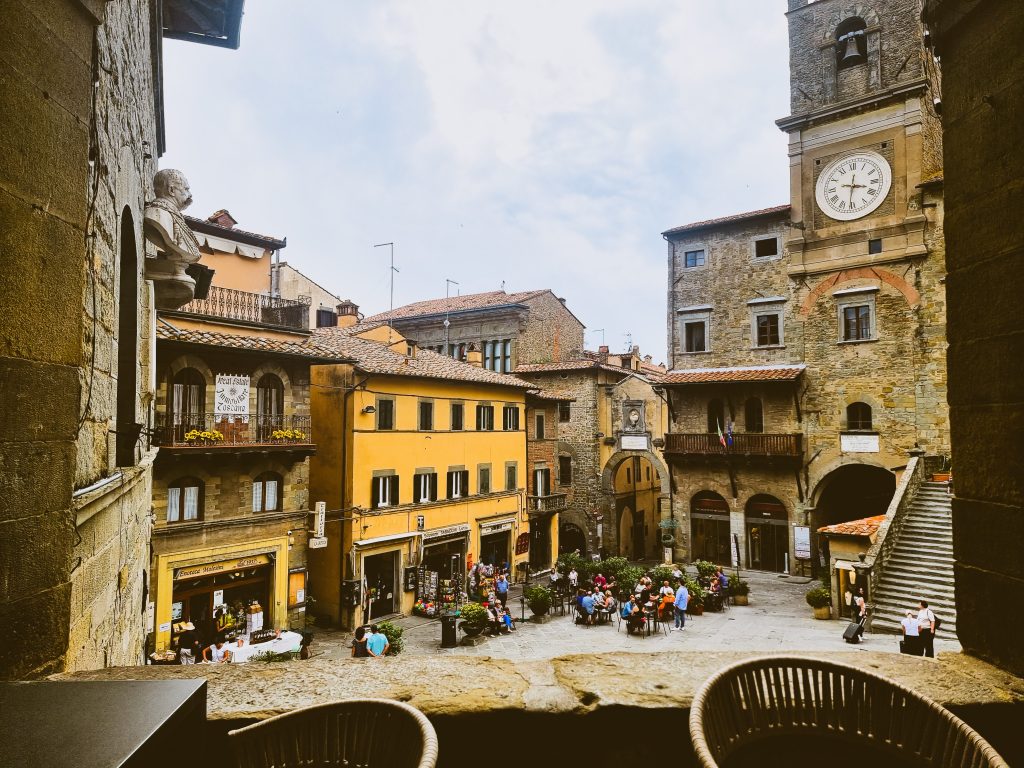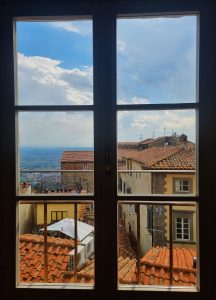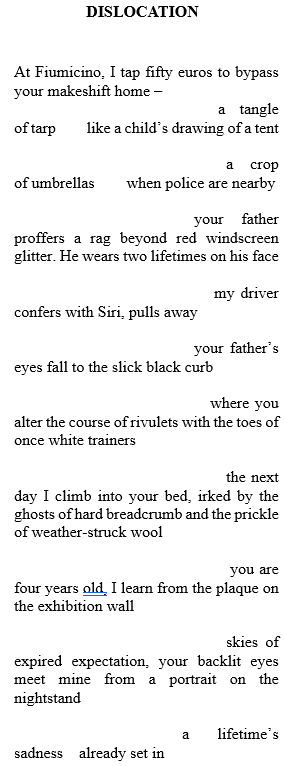What Tuscany Taught Me
What Practice-led Research Can Look Like
Author: Jasmine Plumpton, Newcastle University
Have you ever experienced one of those baffling moments where you realize you are living your past self’s dream? In September, I found myself on a local bus climbing the misty Tuscan hillside towards a Medieval town called Cortona and had one of those very moments. When I started my PhD in the unholy year of 2020, I could never have imagined the places my creative practice would take me. I am incredibly fortunate to be funded by the Arts and Humanities Research Council through the Northern Bridge Consortium, who offer small and large grant schemes to enable their students to undertake overseas and UK study visits, attend conferences and courses, and cover any additional research costs. In early summer, I read an article in the Guardian about a huge photography festival called Cortona on the Move, and encouraged by my supervisors, I put in a large grant application to attend and was successful.

Cortona On the Move is an international documentary photography festival held annually in Tuscany, Italy. Addressing this year’s theme of ‘More or Less’ across twenty-six exhibitions, photographers explored the contrasts between wealth and poverty, abundance and scarcity, and the marginal and mainstream. The festival’s director Paolo Woods has stated that ‘no poor person decides how they get photographed’ (The Guardian). As I have navigated such ethical issues in my own creative practice, which turns the lens on the council estate of my upbringing, I was keen to study how they have been tackled by other photographers.
I am researching the practice of ekphrasis (writing about visual arts) and I am particularly interested in the documentary photograph as ekphrastic subject. In my research, I propose ekphrasis as a documentary device for bearing witness to traumas both close to our own experience and those which we must imagine. I enact this in my creative practice through ekphrastic exploration of documentary photographs. Cortona on the Move was a timely opportunity to look at how a variety of contemporary photographers have responded to themes at the heart of my research, and I hoped it would help me to understand and articulate the contemporary relevance of my work.
We have some work to do when it comes to demystifying what practice-led research can look like, so I’ll give you a rundown of my daily routine while I was in Tuscany. Mornings were spent traveling from Arezzo to Cortona-Camucia station, spurred on by a café pistachio, obviously. If you’ve not heard of it, that’s a coffee made from pistachio cream topped with espresso(!). On the train, I would go through the festival handbook and decide which of the exhibitions I was going to get lost trying to find that day. From the station I would get the tiny shuttle bus all the way up the hillside to Piazza Garibaldi.

I spent afternoons google-mapping the different locations of the exhibitions, which were scattered all over the town. The festival really was ‘on the move’ – on my first day, I arrived at the ticket office, was given a map with a key of the exhibitions and sent on my way. It was the best way to explore somewhere new. I went around and took what I think of as ‘visual fieldnotes’ with my camera at each of the exhibitions, photographing the photos and their settings to reflect on later.
For me, one of the most affecting exhibits was called Where Children Sleep, a project promoting children’s rights by British photographer, James Mollison. It was set out as a room lined with bunk beds with children’s portraits beside them on nightstands. To see where that particular child sleeps, you would have to lie down on the bottom bunk. On the slats above were photographs of sleeping spaces ranging from a princess’s carriage bed, streamered with sashes from child pageants to a mouldering mattress on the outskirts of Rome, awash with old breadcrumbs. The physicality of the exhibition was particularly moving, especially because, for the most part, the cramped children’s bottom bunk you were lying on was complete luxury compared to what you were looking at.
In the evenings, I would look over my photographs, reminding myself of the exhibitions I had seen and making notes on my first impressions. Since returning home, I have been researching the photographers I found particularly interesting with a view to reference their work in my thesis. I have also been drafting poems in response to some of the photographs. My ekphrastic process usually starts with giving the image a short caption which often becomes a title for the piece. Then I start listing details about the image—colours, textures, lighting, etc. I very much begin with naming the obvious stuff, then let my pen run away a bit and see where it goes. A wonderful writer once advised me to ‘go where the warmth is’ when it comes to creative work, and that’s what I do really. I follow the warmth in the image, the thing that moves or stays with me, until a broader theme or metaphor emerges. Once the words are down, it’s all about the shaping.
Do you want to take your creative practice on tour? If I could give a few tips to students looking to apply for funding for an opportunity like this, I would start with a Geordie-ism: shy bairns get nowt. In other words, if you don’t ask, you’ll never know if the answer could have been yes. Don’t be put off by impostor syndrome or thinking you couldn’t do it. If I can find my way around a tiny town in Tuscany with patchy 4G and no Italian, you can do whatever your thing is. Also important is to write a watertight application that lists specific goals and outcomes. This can be difficult with creative work because we are not always certain what the outcome is going to be. EMBRACE THIS. Write your dream outcomes, and explicitly link everything you aim to do to your research and its successful completion. We’re creatives! It’s likely going to be even more impressive than we could have imagined beforehand. Be brave. Become your past self’s dream.
A poem, inspired by the James Mollison exhibition:

Author: Jasmine Plumpton, Newcastle University